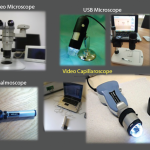“Then we looked at the disease and found that SLE in rural areas has a much higher frequency of skin and joint disease, as opposed to nephritis, which is more common in SLE in urban places,” Dr. Bertsias said. “Also, the prevalence of antiphospholipid antibodies is higher in SLE in urban areas compared with rural areas.”
Although patients in urban areas have more skin and joint disease, there is no difference in the damage that develops—possibly because it is so often severe enough that they will get intense treatment, Dr. Bertsias said.
He notes it’s not known what causes these differences, but further research should look at specific environmental factors. For example, smoking, which contributes to development of SLE, is more common in urban areas, and pesticide use, another contributing factor, is more common in rural areas.
“Our study is hypothesis generating about the possible effect of the place of residence plus environment.”
Thomas R. Collins is a freelance writer living in South Florida.
References
- Tiosano S, Gendelman O, Comaneshter D, et al. The association between systemic lupus erythematosus to bipolar disorder—a real-life study (abstract THU0248). Annual European Congress of Rheumatology. 2017 Jun 15. Madrid, Spain.
- Wijnant S, Ingenoli F, Melsens K, et al. Nailfold capillaroscopy in systemic lupus erythematosus: A systematic review and critical appraisal (abstract THU0252). Annual European Congress of Rheumatology. 2017 Jun 15. Madrid, Spain.
- Gergianaki I, Fanouriakis A, Adamichou C, et al. Comparison of urban versus rural environment associated systemic lupus erythematosus (SLE): Risk and clinical features (abstract THU0254). Annual European Congress of Rheumatology. 2017 Jun 15. Madrid, Spain.

